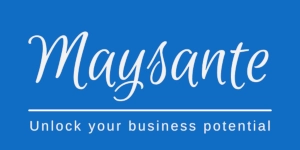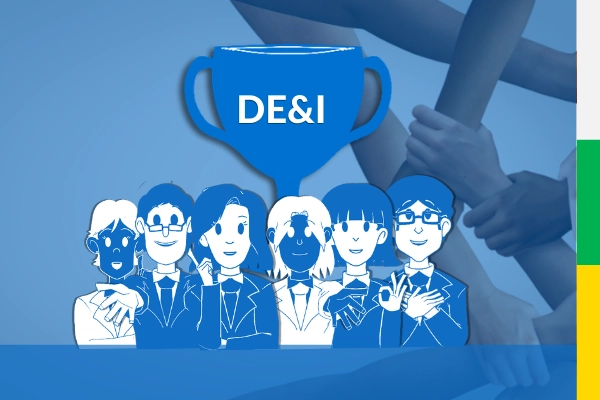Why should you keep diversity and inclusion as a priority when there are so many other business priorities? Diversity affects so many people in the workforce (read key areas of diversity blog). Thus, you must ensure that you do not take a one size fits all approach to addressing the issue.
You need to develop a diversity and inclusion strategy that is fit for purpose for your organisation. You also need to set the goals and objectives as part of your strategy. Be clear on what you are trying to achieve. What does success look like? How you are going to measure success. Who will benefit from the strategy? Link the strategy into your overall business strategy. It should not exist in isolation. Allocate resources to ensure that it is successful. Put monitoring and reporting plans in place to keep on top of it.
You should not treat diversity and inclusion as just a legal compliance issue. But a benefit to both the organisation and your workforce. As reported in McKinsey’s Diversity Wins report, there is a direct correlation between having a diverse executive team and business financial performance. To embed diversity and inclusion into your organisation it must have priority. Follow these 10 strategies for keeping diversity and inclusion a priority:
- Recruitment
- Training and Development
- Rewards and Recognition
- Performance Management
- Promotions and Talent Development
- Employment Engagement Programmes
- Communication and Accountability
- Diversity and Inclusion Champions
- Avoid Tokenism
- Collect, analyse and share data
Recruitment – Keep Diversity and Inclusion in Mind
You must ensure that you design your recruitment process to be inclusive. This includes the technology you use for selecting candidates for your roles. Such technology may include an automated CV selection process. However, if such a process is only leading to a selection of a particular group or characteristics, it may be a signal to review the job specification. For example, the result of an automated CV selection is all men for a senior management role. You, thus, need to review the job specification to ensure it is inclusive.
Your interviewing process must also be inclusive. You must ensure that your recruiting managers have the appropriate training and the ability to adapt an inclusive approach to their selection process. Thus, you must give them conscious and unconscious bias training. As a recruiting manager, you must be selecting your candidates based on their skills, knowledge and experience. You should not base your decision on biases. So, you must not be discriminating against people. Discrimination can be based on their race, age, sex, sexual orientation or gender reassignment. It can also be based on religion or beliefs, disability, marriage and civil partnerships. Pregnancy and maternity, educational and cultural backgrounds are also other types of biases. An employee can bring a claim against you if you discriminate against them in your recruitment process.
Training and Development – Maintain Diversity and Inclusion a Priority
You must offer training and development opportunities to all. Beyond the mandatory training sessions. Your training and development plan must offer developmental opportunities for all your employees. It must be designed to equip them with skills. Hence, help them to progress within your organisation or elsewhere if they end up leaving your organisation.
Opportunities for people to attend training sessions must be given. For example, during their working time. This will make it easier for all to take part in training activities. Employees with young families and childcare responsibilities will also be able to participate.
Paying for professional courses will also help. As it removes cost barriers for employees who may otherwise not be able to afford to pay for the course. As a result, this will help bridge some of the gaps in educational backgrounds.

Rewards and Recognition – All Employees Must Feel Valued
Your reward strategy must be inclusive. People performing the same roles must be paid the same salary. When you are considering pay rises, your pay rise policy must be based on merits. If your policy is biased, certain groups of people will benefit from it. And others will not.
Transparency in your rewards and recognition strategy will ensure that you are fair in your approach and remain so. For example, for people with similar qualifications, skills and experience, do you pay a black employee less than you pay a white employee? Do you pay a woman less than you pay a man? Or an employee with a known disability less than an employee with no known disability?
All your employees must feel valued for their contributions. Thus, you must recognise all their efforts. Give praise where it is due. Your employees will feel valued as a result of these actions.
Performance Management – A System that Eliminates Biases
Your performance management process must be inclusive. It is, therefore, necessary to design a system that eliminates biases. Every employee deserves constructive feedback, support, and objectives.
Thus, you must give them conscious and unconscious bias training. As a recruiting manager, you must be selecting your candidates based on their skills, knowledge and experience. You should not base your decision on biases. So you must not be discriminating against people. Discrimination can be based on their race, age, sex, sexual orientation or gender reassignment. It can also be based on religion or beliefs, disability, marriage and civil partnerships. Pregnancy and maternity, educational and cultural backgrounds are also other types of biases.
Train your managers to objectively manage and evaluate performance.
Promotions and Talent Development – Fair, Non-Biased, Non-Discriminatory and Inclusive
Your talent development programmes and promotions must be non-bias. You must ensure that all eligible employees are given a fair chance.
An inclusive talent program must have a good representation of your workforce. This includes men, women and non-binary people. Also different races, age diversity and sexual orientation. It also includes different religions or beliefs, diverse marital statuses and disabilities. Pregnancy and maternity, educational and cultural backgrounds are also part of inclusivity.
Your selection process for promotions should be fair, non-biased, non-discriminatory and inclusive. You must promote on merit.
Employee Engagement Programmes
Your employee engagement programmes must be inclusive. Activities included in the programme must be designed with all employees in mind. It must not just please a selected few.
Communication and Accountability
Your employees must feel empowered to speak openly about what matters to them. Thus, they must have an avenue for complaining if they feel harassed, bullied or discriminated against. You must make it easy for people to speak up. You must take positive actions to investigate and hold people accountable for their actions.
As a leader, you must make sure that you follow up to ensure all discrimination cases are adequately addressed and resolved.
Diversity and Inclusion Champions – Help Keeping it a Priority
Diversity and inclusion champions play a great role in monitoring the effectiveness of diversity and inclusion strategies. They can recommend activities and ideas to incorporate into future plans.
They can also ensure that diversity and inclusion are embedded into the culture.
Additionally, HR, Diversity and Inclusion professionals as well as senior management and leadership can act as ambassadors. Involve them from the start. It will help secure their buy-in and support.
Avoid Tokenism
Tokenism can be damaging to the individual, the organisation and to progress. For example, if a team feels their manager is appointed because they are a woman, they are less likely to respect them. The manager will struggle to effectively manage their team. Likewise, if there is the perception that a black person or a disabled person is appointed to a board because of their race. It creates a recipe for disaster.
People should be appointed based on their merit. If your system is fair, unbiased and equitable, you should have a strong diverse team. The team will have a great representation of people from all backgrounds and abilities. Everyone will be respectful and welcoming.
Collect, analyse and share data
By collecting information on diversity and inclusion, it will help you build a better picture of reality. You will be able to analyse the different facets of diversity. You’ll also be able to evaluate the results against your strategies and your success criteria.
Being transparent and sharing the data will help improve trust between leadership and the workforce.

